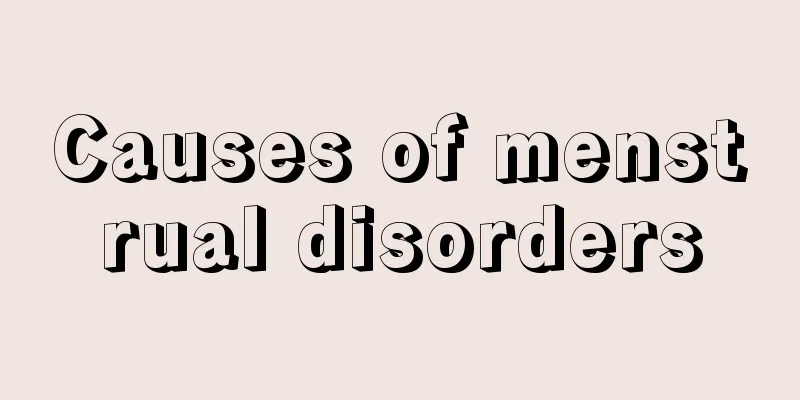How long can the third degree placenta last?

|
Many people are not very clear about what grade three placenta means. First of all, the placenta is a thin film that wraps the baby's body when it is born. This film absorbs nutrients in the uterus and supplements nutrients to the baby's body. Therefore, the nutritional value of this film is very high. It also absorbs the essence of the mother. Grade three placenta indicates that it is fully mature. At this time, the month has exceeded the expected date of delivery, and the placenta can no longer be used to supply nutrients. What does placenta 3 degrees mean? The third degree of placental maturity means that the placenta is already mature. If it exceeds the due date, a caesarean section is required in time. When the placenta is mature, it cannot provide nutrition to the fetus. The placenta will gradually mature as the pregnancy progresses. When it matures to a certain extent, its function will decline, just like aging, and it will not be able to provide nutrition and oxygen to the fetus normally. The placenta maturity grade is a standard used to measure the maturity of the placenta, which is usually divided into 4 levels, as follows: Placental maturity is divided into four levels: Placenta level 0: early and mid-pregnancy placenta, immature. Placenta grade 1: An early sign of maturity, appearing around 30 weeks of pregnancy, indicating that the placenta is not yet mature, but in a few cases it persists until delivery. Using the L/S ratio as a control, about 60% of grade 1 placentas have a ratio of 2.0. Placenta grade 2: questionable maturity, about 10% of amniotic fluid L/S ratio is <2.0, 55%-60% of full-term pregnancies are grade 2 placentas, and if it reaches grade 2 before planned delivery in high-risk pregnancies, the fetus has a great chance of survival. Placenta grade 3: mature placenta, L/S ratios are all ≥2.0. The maturity of each person's placenta is different: mid-pregnancy (12-28 weeks) - placenta grade 0; late pregnancy (30-32 weeks) - placenta grade 1; after 36 weeks - placenta grade 2 (relatively mature). If a grade 3 placenta is found before 37 weeks and combined with the value of the biparietal diameter and the estimated fetal weight of 2500 grams, placental precocity should be considered and the patient should be alert to the possibility of intrauterine growth retardation. At 38 weeks, the placenta enters stage 3, indicating that the placenta is mature. In late pregnancy, the function of the placenta decreases as the fetus matures. The aging of the placenta means that the function of the placenta is significantly reduced, which may affect the development of the fetus. If the fetus is mature, early delivery is required. The so-called placental aging refers to the decline and reduction of the function of the placenta, which results in fetal hypoxia, malnutrition, developmental delay and fetal distress, and even stillbirth, stillbirth, neonatal asphyxia, etc. The long-term consequence is fetal brain cell necrosis and poor development, and ultimately leads to mentally retarded children. |
<<: How many placentas are there for twins?
>>: How to treat menopause psychologically?
Recommend
What are the tests for blocked fallopian tubes?
The fallopian tube is a traditional Chinese medic...
What foods should not be eaten for ovarian cysts?
In life, we often hear the saying that being able...
Will twins bleed if one of them stops growing?
In the early stages of pregnancy, the development...
How to choose bra cup underwear
In recent years, the development momentum of the ...
Pregnant women eat sweet potatoes
During the confinement period, the mother's b...
Will getting angry while breastfeeding cause milk to dry up?
Breast milk is the best nutritional supplement fo...
What pregnant women eat will affect the quality of amniotic fluid. What foods should not be eaten if the quality of amniotic fluid is poor?
We all know that after a woman becomes pregnant, ...
Why is it so painful to breastfeed after childbirth? Is there any way to relieve the pain of breastfeeding after childbirth?
Generally speaking, pregnant mothers usually brea...
My feet suddenly became swollen when I was due to give birth.
It is almost the time of pregnancy, and mothers a...
Common Misconceptions about Antimicrobial Use
Many people make some common mistakes when taking...
【Creative Cultivation Program】Cholera is making a comeback? It is indeed dangerous, but there is no need to panic
Author: Chen Wen Reviewer: Jie Zhijun, Chief Phys...
Painless abortion surgery form
First of all, a B-ultrasound examination is neede...
.When I was four months pregnant, I would sometimes feel pain in my right waist when I sat on the bed and couldn't move.
Pregnancy is very difficult for many women, becau...
What is the effective method for breast enhancement?
Today's society can be said to be an era wher...









